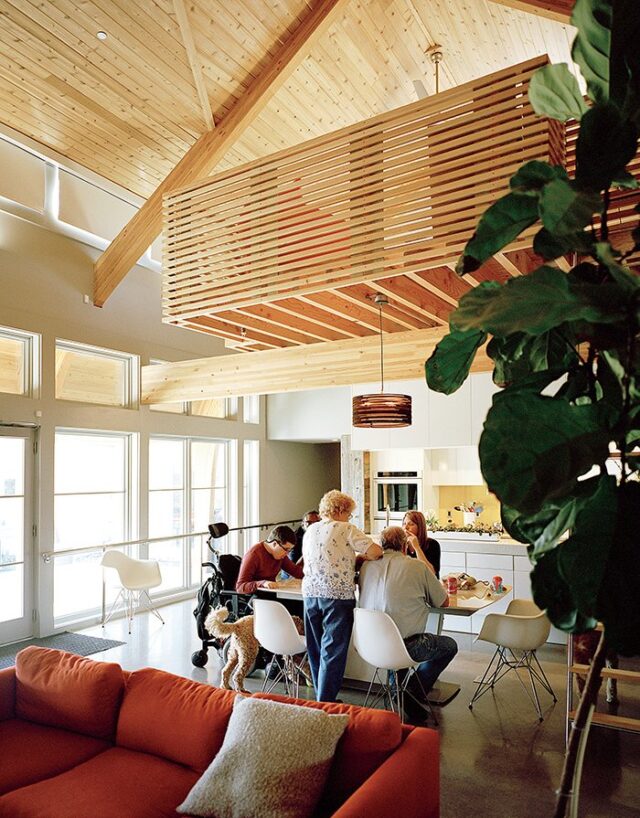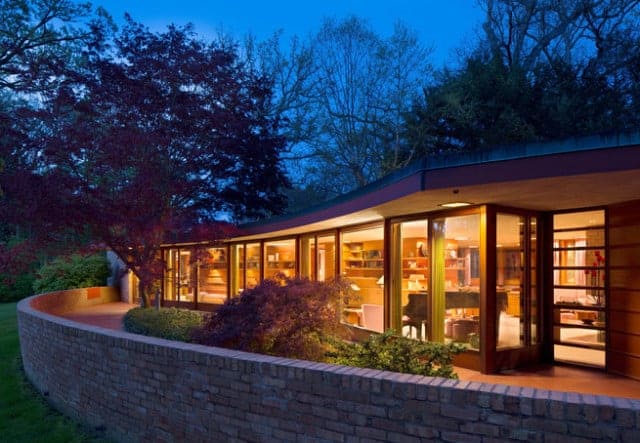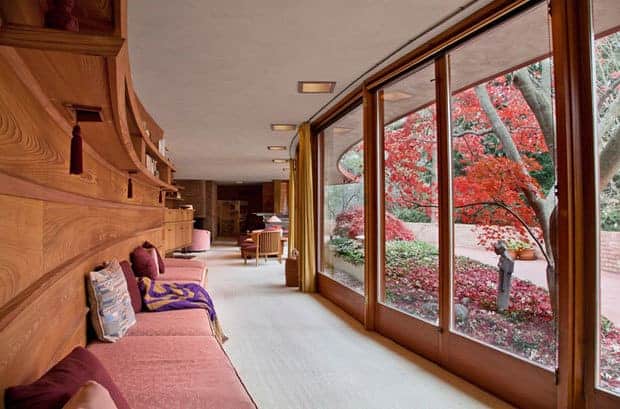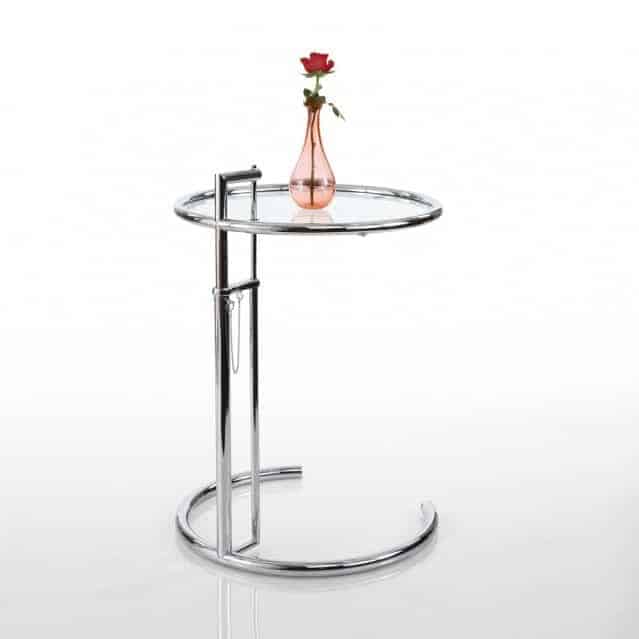Update Dec. 2020: This article from dwell of ‘9 Inspiring Accessible Homes That Champion Inclusive Design’, exemplifies how you can make a home accessible and stylish so we thought we should add to this blog. They also refer to the home designed by Frank Lloyd Wright in 1949. How things have progressed?!?!
Here’s an example of a sustainable & accessible home. Architects and designers sometimes forget that sustainable should be accessible too.

…………………………………………………………………………………………………………………………………………………………….

We wrote this a while ago but it’s still relevant today and if you want to know how to pay for adjustments, please read more here.
Legendary architect and interior designer Frank Lloyd Wright – officially the greatest American architect – designed more than 1,000 different structures during his iconic career. He’s probably best known for the stunning Fallingwater – “the greatest work of American architecture” and The Guggenheim, amongst others. Less well known is a small house in Rockford, Illinois that he built for Kenneth and Phyllis Laurent. It was the only fully accessible home he ever designed and something of a forerunner to modern inclusive design.
The Rockford residence was made for paraplegic navy veteran Kenneth Laurent and his wife Phyllis, between 1949 and 1952. Wright called the house “my little gem” and developed an uncharacteristic friendship with the Laurents, maintaining close contact with them after the house was built. He would visit them personally at the house and invited them to “drop in any time” at Taliesin, Wright’s Wisconsin home. When he came to look back at his career, he placed the little house in Rockford amongst his top 35 most significant designs.
Kenneth and Phyllis both passed away in 2012, having spent almost sixty years in the house (they’d moved into a care home shortly before), leaving it to be turned into a museum for others to enjoy as much as they did. The first, and in fact only, home Frank Lloyd Wright made for a wheelchair-bound person was opened earlier this year as a museum dedicated to the architect.

The house features an accessible design that was all but unique for the time. The curving shape means manoeuvring from room to room is seamless and involves no navigating around difficult corners. Wide corridors mean that wheelchair users never have to reverse their chair but can always turn around instead. Built-in, wheelchair-height bookshelves and low, panoramic windows put everything at the right height for a wheelchair user. Wright also designed all of the furniture in the house to be easy to use and stylish to look at. It seems almost needless to say, that the entire house is step free. It’s a remarkable building that was way ahead of its time.
But we aren’t all lucky enough to have iconic, world renowned architects to design accessible buildings for us. For that matter, few can afford to have their house built for them from scratch by any architect at all. So, with that in mind, what can we do to make an accessible living space on a tighter budget?

For wheelchair users the key is to maximise floor space and create more room to move around. Thank heavens for modern perks like wall mounted TVs and clever storage facilities which save space. The floor also needs to be smooth and flat – wooden or laminate flooring are ideal both for getting around and from a style point of view, so that’s a win win.
Picking the right furniture is important but can be a real challenge to do whilst remaining stylish. Recliners are comfortable and can help with blood flow and improve circulation. They also make it easier to to sit down and perhaps more importantly to get back up again independently. Similarly, high back chairs are good for the many people for whom low chairs are a struggle and provide excellent back support. But where are the stylish options for either type of chair? Attractive furniture choices are few and far between if you look on specialist websites and stores. Partly this is because you can buy this kind of furniture in most furniture shops anyway but we’ve seen some truly hideous recliners on mobility sites (sorry, but it’s true).
However, one trendy option designed specifically for healthcare use can be found at Hitch Mylius. Addressing the particular requirements of care homes and the needs of the elderly, hm82 by Kenneth Grange comprises ergonomically designed high-backed and low-backed chairs with or without arms. They’re ergonomic, comfortable, supportive and cool. Through these designs, also known collectively as Edith chairs, Hitch Mylius show they are providing “an exciting departure from the traditional and dated furniture currently available for this growing and increasingly sophisticated market.”

Another thing to consider in the living room area is whether or not to ditch the coffee table in favour of smaller side tables. This does help to save space, making it easier to get around and also means there’s plenty of table space throughout the room. Having a few small tables rather than one big one can make plenty of sense if you’re not particularly mobile. We’d recommend this Eileen Grey table based on personal experience. Its stand out feature is that it’s adjustable so you can raise or lower it to whatever height you need – this has been ideal for a wheelchair user. And it looks great too.
Storage space is key on two fronts. It creates more space to move in and keeps unsightly equipment out of sight. If this can be combined with any other furniture in the room all the better (e.g. under tables or using the seat of a chair), but keeping things out the way is of major importance. It’s tricky to do and dependent on the space your working with but the key is that if you can maximise space, you maximise the accessibility of the living room.
Not everybody has a Frank Lloyd Wright to make their home accessible but with a little extra effort you can get something close to the brilliant house that the Laurents enjoyed!
